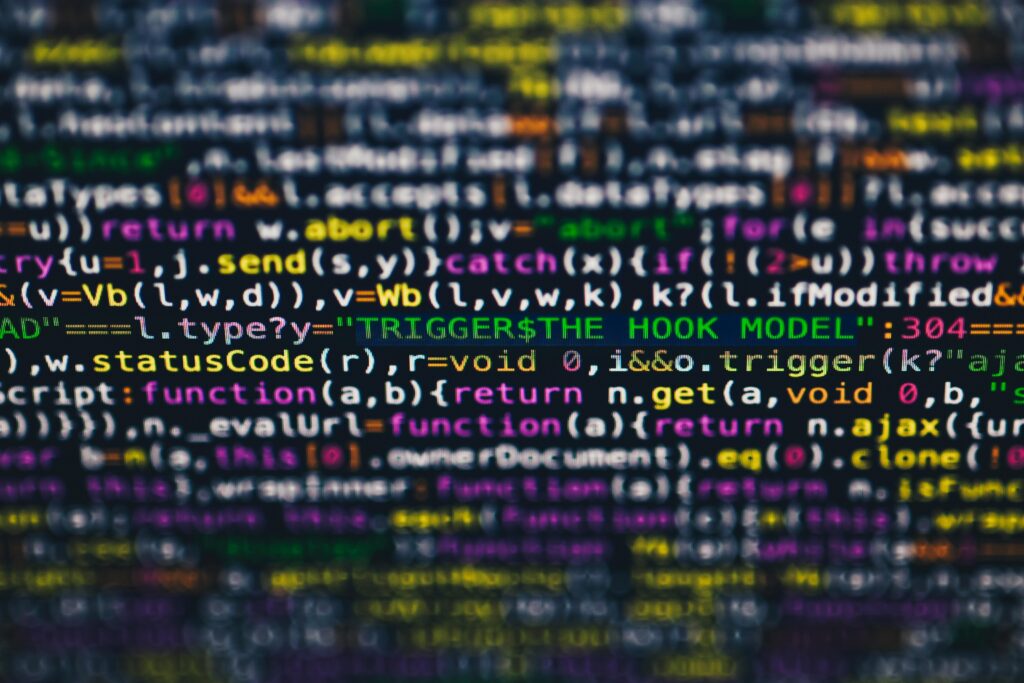Address
304 North Cardinal St.
Dorchester Center, MA 02124
Work Hours
Monday to Friday: 7AM - 7PM
Weekend: 10AM - 5PM
Address
304 North Cardinal St.
Dorchester Center, MA 02124
Work Hours
Monday to Friday: 7AM - 7PM
Weekend: 10AM - 5PM

Looking around any office today, you’ll spot computers running antivirus software , that steady green checkmark promising safety. Pretty standard stuff. But here’s the problem: malware writers know exactly how antivirus works, and they’re getting better at slipping past it.
Think about it like an airport security checkpoint. Antivirus looks for known bad stuff (the signatures), but what about the clever new tricks that aren’t on the watch list yet? That’s where it falls flat. Zero day attacks? Brand new malware variants? They sail right through.
EDR tools try to fix this by watching for weird behavior instead of specific threats. When something acts suspicious , like a Word doc suddenly trying to edit system files , EDR spots it. Smart, right?

Most folks don’t think twice about their antivirus software, that persistent background program that’s probably running on your computer right now. It’s been around since the late ’90s, doing its best to keep the bad stuff out.
And it has a lot to do: industry trackers reported hundreds of thousands of new malware samples per day as far back as 2012-2013, an onslaught that pushed AV tools to evolve into full “anti-malware” and endpoint protection suites (1)
The software’s pretty straightforward: it relies on an enormous database of digital fingerprints, known as signatures, for previously identified viruses.
For example, the open-source antivirus ClamAV boasted over 5.7 million virus signatures in its database (updated at least every four hours as of early 2017), with daily updates adding around 23,040 new entries (2).
Takes a look at the code, checks it against what it knows, and throws up a red flag if something doesn’t look right. Sometimes it just quarantines the suspect file, other times it straight up deletes it.
There’s definitely some holes in the defense. These days, hackers are writing code that changes itself every few minutes , kind of like a chameleon changing colors. Brand new attacks (the ones that haven’t made it into any database yet) can slip right through.
Even worse, some of the really nasty stuff doesn’t even touch your hard drive, it just floats around in your RAM where it’s harder to spot.
Nobody wants to admit it, but antivirus programs can really drag down your system. When it’s doing a full scan, you’re looking at maybe 5,15% of your processor power getting eaten up.
On newer computers it’s not such a big deal, but fire up a scan on your aunt’s ancient laptop and you might as well go make a sandwich while you wait.
The truth is, these programs aren’t exactly batting a thousand. Sometimes they’ll freak out over a perfectly normal file (happened to me with a PowerPoint presentation last week), and other times they’ll completely miss actual viruses.
Sure, they update their virus definitions every couple hours, but it’s like they’re always one step behind the newest threats.

Credit: pexels.com (Photo by Markus Spiske)
Night after night, security analysts lean forward in their chairs, eyes fixed on monitors filled with endless data streams. EDR watches it all , every click, every USB plugin, every questionable program that shouldn’t be running at 3 AM. When something’s off, it doesn’t hesitate. Shutdown happens fast.
Antivirus just doesn’t cut it anymore. EDR’s more like that veteran detective who knows trouble’s coming before it hits the street. When things go sideways, security teams get the whole story, frame by frame. It’s a lot like having a security camera inside every computer on the network.
Nobody likes talking about it, but EDR’s got some serious weak spots. Works great on computers, sure. But throw in some cloud stuff or smart office gadgets, and it starts looking pretty lost. And you better believe the hackers know exactly where to hide between those gaps in coverage.
This is why some organizations are turning to broader endpoint threat detection strategies to cover what standard tools miss.
Managing EDR’s is about as much fun as a root canal. You need people who really know what they’re doing, and they’ve got to handle this endless stream of alerts. Most teams end up buried under false alarms, and that’s exactly when something real slips through. Always at the worst possible time, too.
For many, the real challenge is effective EDR management, making sense of alerts without overwhelming the team.
Try running EDR across a network with 10,000 computers. Watch those costs pile up faster than coffee cups during finals week.
Just keeping everything updated turns into a full time job for three or four people. Without some serious automation (and deep pockets), the whole thing starts looking like throwing money down a drain.
Some say EDR’s gonna save cybersecurity. But here’s the truth , it’s just one piece of a bigger puzzle. Smart companies are already looking at what’s next, cause waiting around isn’t gonna cut it anymore. The threats keep changing, and sometimes EDR just can’t keep up.

Credit: pexels.com (Photo by Sora Shimazaki)
The old reliable antivirus works like a police officer with a book of mugshots, checking files against known bad guys. EDR’s more like a detective watching for suspicious behavior.
That’s why antivirus can flag threats fast but misses the new criminals in town, while EDR spots more unusual activity but needs someone who knows what they’re looking at to make sense of it all.
Antivirus keeps its eyes glued to files and programs (stuff you can click on, basically). EDR casts a wider net , it watches everything happening on a computer, from memory use to network connections, though it doesn’t see much beyond that single machine.
Neither one’s great at watching internet traffic or cloud stuff without extra help.
When brand new threats pop up, antivirus might as well be wearing a blindfold , it just doesn’t know what to look for yet. EDR’s better at catching these sneaky attacks by watching how they act, but usually only after they’ve already started causing trouble.
They’ve both got blind spots: antivirus misses the new stuff, EDR needs someone to respond fast.
Pretty much anyone can run antivirus software , it updates itself and doesn’t ask too many questions. EDR’s a different story, it’s like trying to fly a plane without training.
You need experts who know what all those blinking lights mean and what to do when something goes wrong. Small companies often can’t handle that kind of complexity.
Small businesses face a tough reality with antivirus software. Sure, it catches the garden variety malware that’s been around for ages, and it won’t break the bank. But here’s the thing , modern attackers don’t play by yesterday’s rules.
They’re slipping past these basic defenses with attacks that don’t even leave files behind to detect.
EDR tools might look great on paper, but they’re eating up security teams alive. Just ask any analyst drowning in alerts at 3 AM. Between fine, tuning rules and chasing down every suspicious process, teams are stretched thin. And let’s be real , most companies can’t throw more money or people at the problem.
Think of antivirus and EDR like a good cop/bad cop routine. Antivirus handles the obvious threats, EDR digs deeper into the suspicious stuff. Nobody’s perfect alone, but together they’ve got each other’s backs.
Endpoint tools aren’t enough, plain and simple. Networks need eyes everywhere , watching cloud services, scanning traffic, gathering intel. Plus, there’s no patch for human error, so training can’t be an afterthought.
Think of antivirus as security’s first line of defense. It’s not fancy, but it gets the job done against everyday threats. Like a security guard checking IDs at the door.
EDR is the detective that shows up after something looks wrong. It digs through evidence, tracks down leads, and helps piece together what happened. Perfect for when things get messy.
Money talks. Smaller shops stick to basic antivirus with maybe some EDR features thrown in. Big enterprises? They’re going all in, with fancy EDR setups and dedicated security teams.
It’s a constant balancing act. Set the alerts too high, and analysts waste time chasing ghosts. Too low, and real threats slip through. Nobody’s found the perfect sweet spot yet.
Security teams can’t just rely on basic antivirus anymore. That’s old news. Extended Detection and Response (XDR) is popping up everywhere. It pulls data from endpoints, networks, and cloud systems all in one place. This makes sense, especially when traditional tools miss a lot of blind spots.
Security analysts are overwhelmed with alerts. Anyone who has spent time in a Security Operations Center (SOC) knows this. But smart AI tools can help cut through the noise. Here’s how:
These changes can make life easier for security teams. It’s about working smarter, not harder. With XDR and AI, security can become less of a headache. So, if you’re in security, consider these tools. They can help you stay ahead of threats and make your job a lot more manageable.
The days of running five different security tools are coming to an end. Everything is moving toward one platform that does it all. This includes antivirus, Endpoint Detection and Response (EDR), network security, and threat intelligence. It’s not perfect yet, but progress is being made. Here are some benefits of this approach:
Nobody said security would be easy. The bad guys are always finding new tricks. Security tools need to keep up. It’s like playing whack-a-mole, but with serious consequences. Here are some challenges security teams face:
The future of security is about combining tools into one smart platform. This will make it easier for teams to protect their companies. But challenges will always be there, and staying ahead requires constant effort.
Banks, healthcare, and government organizations face tough challenges. They must follow strict rules and regulations. This means they need strong Endpoint Detection and Response (EDR) systems. But having these systems can create more complexity. Here are some issues they deal with:
These industries need to balance security with usability. Finding the right tools is key.
Small businesses and nonprofits often have limited funds. They can’t spend a lot on security. Many stick to basic antivirus software. Some might get lucky and have lightweight EDR systems. Here are some common situations:
For small organizations, security is a challenge. They must find ways to protect themselves without breaking the bank. While they may not have the best tools, they can still take steps to improve their security. Simple practices like regular updates and employee training can help.
Big companies face tough times. They have many devices, people working from different places, and networks that can look like spider webs. They need strong solutions and teams to manage everything.
Challenges they face include:
Managed Service Providers (MSPs) have their own struggles. They try to keep everyone happy. They must balance high-tech security tools with what clients can pay.
They often mix and match solutions, such as:
MSPs must be smart about choosing the right tools. They need to make sure they fit the budget of their clients. This is tricky because some clients want the best, but can’t pay for it.
In the end, both big companies and MSPs have to work hard to keep everything safe. They need the right tools and teams to manage the challenges they face.
Increasingly, they’re offering managed EDR as a way to give clients enterprise-level protection without the heavy internal overhead.
No security tool’s gonna save the day on its own, that’s just reality. Look, antivirus and EDR each pull their weight, but neither one’s gonna work miracles by itself.
It’s kind of like a football team’s defense , you need those big guys up front stopping the run, plus those fast corners keeping up with receivers.
Same deal here, antivirus handles the everyday junk while EDR tracks down the sneaky stuff that slips through. But don’t think you can just turn these things on and walk away.
So here’s the deal: layer those tools, get your people trained up right, and don’t get too comfortable. Putting all your faith in just one security tool? That’s about as smart as bringing a baseball bat to a shootout.
Face it, the hackers aren’t taking nights off, so neither can your security setup. If you’re looking to strengthen your security operations with expert support, there are services designed to streamline tools, reduce overhead, and improve integration for long-term resilience.
Antivirus often relies on signature,based antivirus and malware signatures, which struggle with new malware variants and file scanning limitations. EDR, while stronger at behavioral analysis and suspicious activity detection, faces its own challenges like complex management, scalability challenges, and expert dependency.
Traditional antivirus uses malware signatures and heuristic detection, but these methods create antivirus limitations when facing zero day threats, encryption bypass attempts, or fileless malware. EDR’s proactive detection, machine learning detection, and behavioral anomalies analysis offer better defenses.
Both antivirus and EDR generate security alerts that can overwhelm a security operations center. Alert fatigue sets in when false positives and false negatives pile up, leading to missed threats.
Antivirus often provides reactive security by quarantining malware and using malware removal after infection. EDR adds proactive detection through continuous monitoring, endpoint visibility, and automated response to suspicious activity detection.